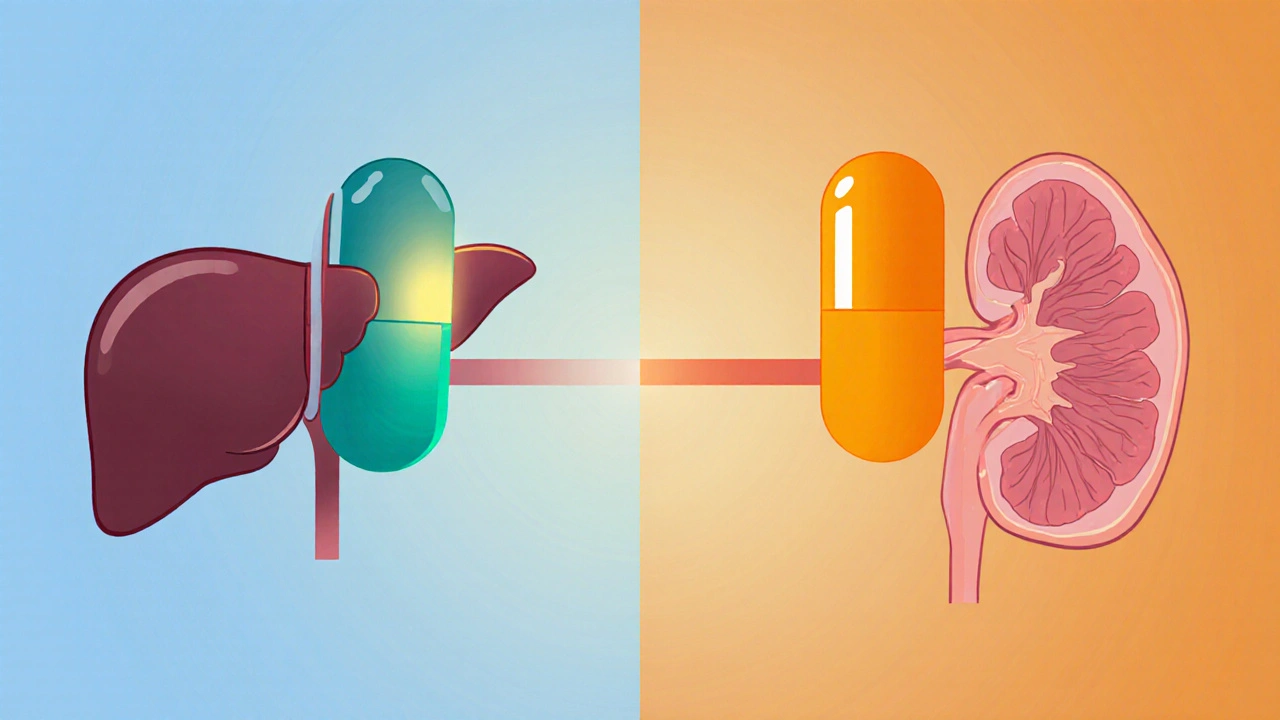Compare alfacalcidol and calcitriol, learn how each works, best uses, dosing, side‑effects and how to pick the right vitamin D analog for kidney or bone health.
vitamin D analog: What they do and when you might need one
Vitamin D analogs are medicines made to act like vitamin D but with small chemical changes. Those tweaks let doctors target specific problems — for example, calming skin in psoriasis or lowering parathyroid hormone in kidney disease — while trying to limit unwanted effects on blood calcium.
How vitamin D analogs work and common uses
These drugs bind the same receptor as regular vitamin D (the vitamin D receptor). That changes how your body handles calcium, bone, and some immune responses. Notable examples you might hear about are calcitriol (active vitamin D), alfacalcidol (a prodrug turned into calcitriol in the liver), calcipotriol (aka calcipotriene — a topical option for psoriasis), paricalcitol and doxercalciferol (used in chronic kidney disease to control secondary hyperparathyroidism).
Use cases are fairly specific. Topical calcipotriol treats plaque psoriasis to reduce scaling and inflammation. Calcitriol and alfacalcidol treat low calcium from hypoparathyroidism or certain metabolic problems. Paricalcitol and doxercalciferol are chosen in kidney patients because they lower parathyroid hormone with less rise in blood calcium than older options.
Safety, monitoring, and practical tips
The main risk with any vitamin D analog is too much calcium (hypercalcemia) and too much calcium in the urine (hypercalciuria). Symptoms include nausea, weakness, constipation, confusion, and increased thirst. If you develop those, stop the drug and call your doctor.
Doctors usually check blood calcium, phosphorus, and kidney function when you start an analog and at regular intervals after that. If you take other medicines, mention them: thiazide diuretics can raise calcium levels; anticonvulsants like phenytoin can lower vitamin D activity; steroids blunt the drug’s effect. Tell your provider about supplements too — many people take extra vitamin D or calcium without realizing the risk.
Pregnancy and breastfeeding need special care. Some analogs cross into breast milk or affect the fetus. Use only when your doctor says it’s safe and necessary.
If you’re thinking of buying an analog online, be cautious. Always use a pharmacy that requires a prescription and shows clear contact details, verifiable licensing, and secure payment. Avoid websites offering miracle cures or unusually low prices without a prescription. When in doubt, talk to your pharmacist or doctor first.
Want a quick checklist before starting a vitamin D analog? 1) Know the exact drug and dose. 2) Check baseline blood calcium and kidney tests. 3) Review all meds and supplements. 4) Schedule follow-up labs. 5) Watch for symptoms of high calcium.
These steps keep treatment safe and effective. If you have specific questions about an analog you were prescribed, bring the drug name to your next visit or contact a pharmacist for a clear, practical answer.
Everything you need to know before taking Rocaltrol: how it works, who needs it, potential side effects, and practical tips for safe use.


